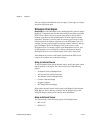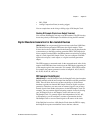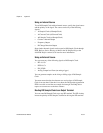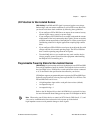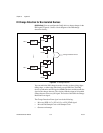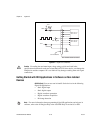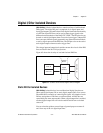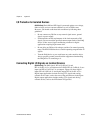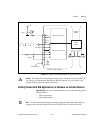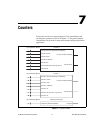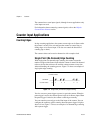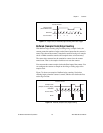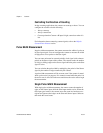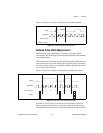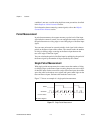Chapter 6 Digital I/O
NI 6124/6154 User Manual 6-12 ni.com
I/O Protection for Isolated Devices
(NI 6154 Only) Each DIO and PFI signal is protected against over-voltage,
under-voltage, and over-current conditions as well as ESD events.
However, you should avoid these fault conditions by following these
guidelines:
• Do not connect any DO line to any external signal source, ground
signal, or power supply.
• Understand the current requirements of the load connected to DO
signals. Do not exceed the specified current output limits of the DAQ
device. NI has several signal conditioning solutions for digital
applications requiring high-current drive.
• Do not drive any DI line with voltages outside of its normal operating
range. The PFI or DIO lines have a smaller operating range than the AI
signals.
• Treat the DAQ device as you would treat any static sensitive device.
Always properly ground yourself and the equipment when handling
the DAQ device or connecting to it.
Connecting Digital I/O Signals on Isolated Devices
(NI 6154 Only) The DIO signals, PFI <0..5>/P0.<0..5> and
PFI <6..9>/P1.<0..3>, are referenced to D GND. PFI <0..5>/P0.<0..5> are
inputs and PFI <6..9>/P1.<0..3> are outputs. Figure 6-6 shows digital
inputs PFI <0..5>/P0.<0..5> and digital outputs PFI <6..9>/P1.<0..3>.
Digital input applications include receiving TTL signals and sensing
external device states, such as the state of the switch shown in the figure.
Digital output applications include sending TTL signals and driving
external devices, such as the LED shown in Figure 6-6.



